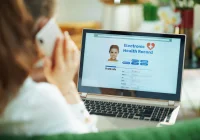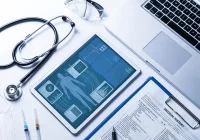In an increasingly digital world, access to online services has become essential for participating fully in society. However, recent studies indicate that many UK families cannot engage with today's digital society due to a lack of online skills and access to necessary devices, data, and broadband. This digital divide is a social issue and a significant barrier to healthcare access. Addressing these disparities can significantly enhance the reach and quality of healthcare services, providing better outcomes for all.
The Digital Skills Challenge in Healthcare Access
The digital skills divide poses a formidable challenge for the healthcare sector. As healthcare services increasingly rely on digital platforms for appointments, consultations, and records, patients without the necessary skills or access to technology face significant barriers. This gap is particularly concerning for vulnerable populations, including low-income individuals, residents of remote or rural areas, and older adults who may not be comfortable with digital tools. The consequences of this divide are severe, leading to delays in treatment, higher rates of preventable health conditions, and increased risks associated with lack of timely medical care. Developing strategies that equip these populations with the skills and resources needed to navigate digital healthcare services effectively is crucial.
Prioritising Up-to-Date Electronic Health Records
Electronic Health Records (EHRs) are a cornerstone of modern healthcare, providing a comprehensive and accessible database of patient information. However, maintaining up-to-date EHRs requires patients to engage with digital platforms, which can be daunting for those lacking digital literacy or access. Incomplete or inaccurate records can disrupt the continuity of care, leading to treatment errors that, while not always severe, can still impact patient outcomes and satisfaction. To address this issue, healthcare providers should streamline the process of updating EHRs, potentially through human-assisted communication channels such as call centres. This approach allows patients to relay necessary information without the stress of navigating complex digital systems, ensuring that healthcare providers have the complete data needed to offer optimal care.
Addressing Digital Disconnection in Mental Health Services
Mental health services have increasingly moved online, but this shift has not been accessible to all patients. Those lacking digital access or skills often struggle to connect with the support they need, exacerbating mental health issues and contributing to feelings of isolation and frustration. For these patients, user-friendly digital platforms and the availability of human support, such as phone consultations, are crucial. These services ensure that patients receive the care they need in a manner that respects their abilities and circumstances. Moreover, direct human interaction can enhance patient satisfaction and trust, providing a sense of being heard and understood that automated systems cannot match.
The digital divide in healthcare is a pressing issue that affects access to services and the quality of care received by patients. Bridging this divide requires a multifaceted approach that includes improving digital literacy, expanding access to technology, and maintaining robust human-centred communication channels. By prioritising these areas, the healthcare system can become more inclusive and effective, ensuring that all individuals, regardless of their digital skills or access, can benefit from modern healthcare advancements. Addressing the digital divide is not just a technical challenge but a moral imperative to achieve equitable healthcare for all, fostering a more connected and healthier society.
Source: HealthTech Digital
Image Credit: iStock










